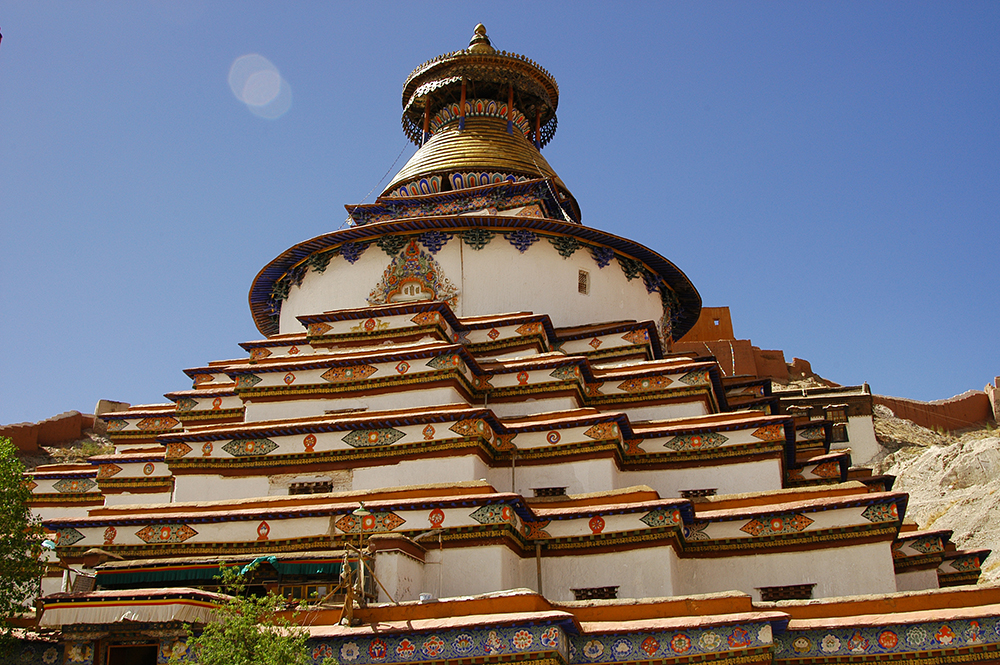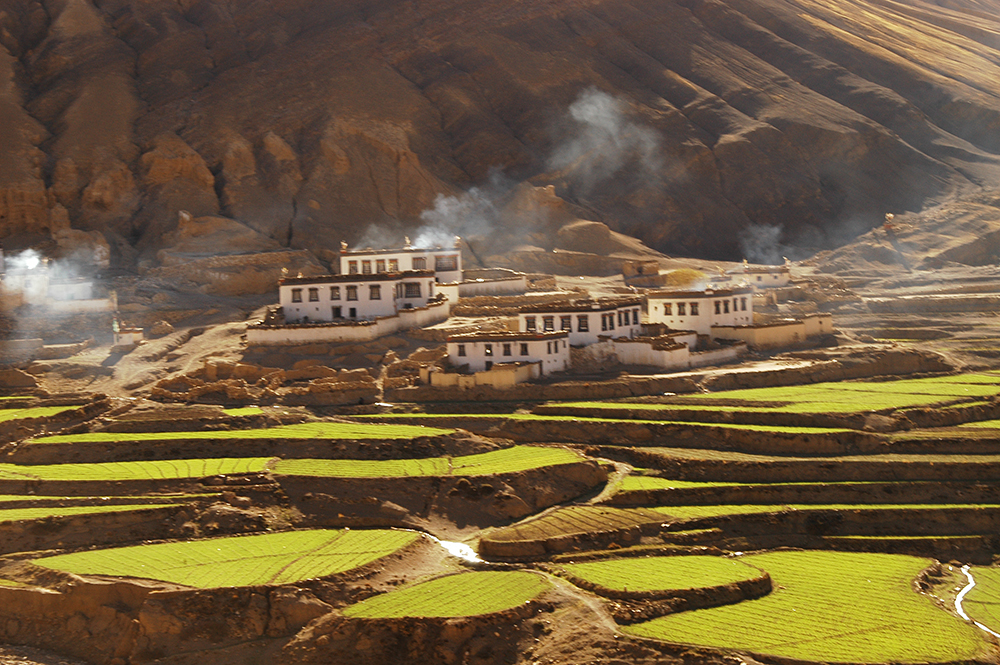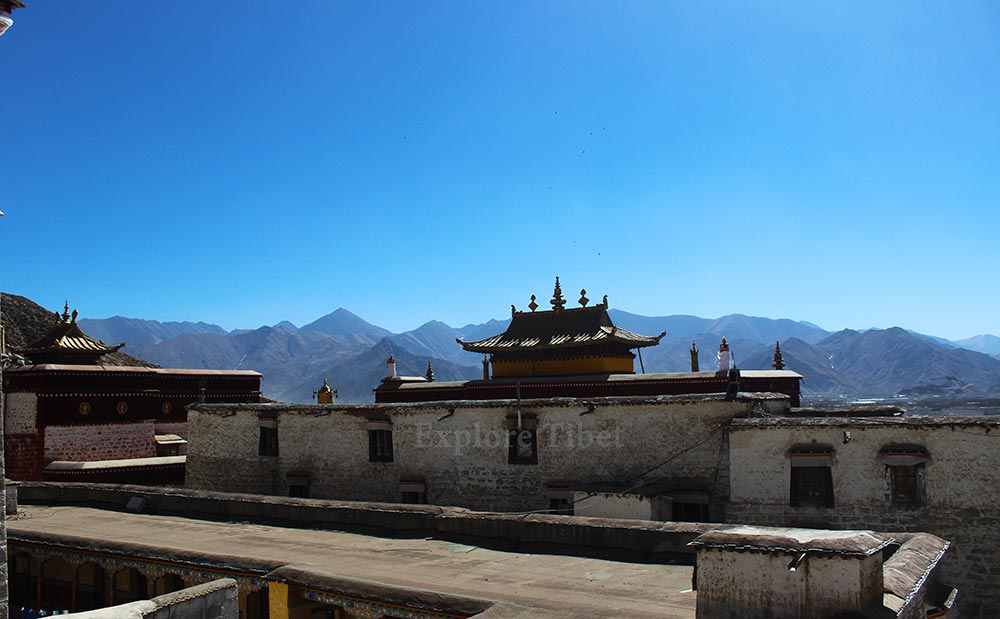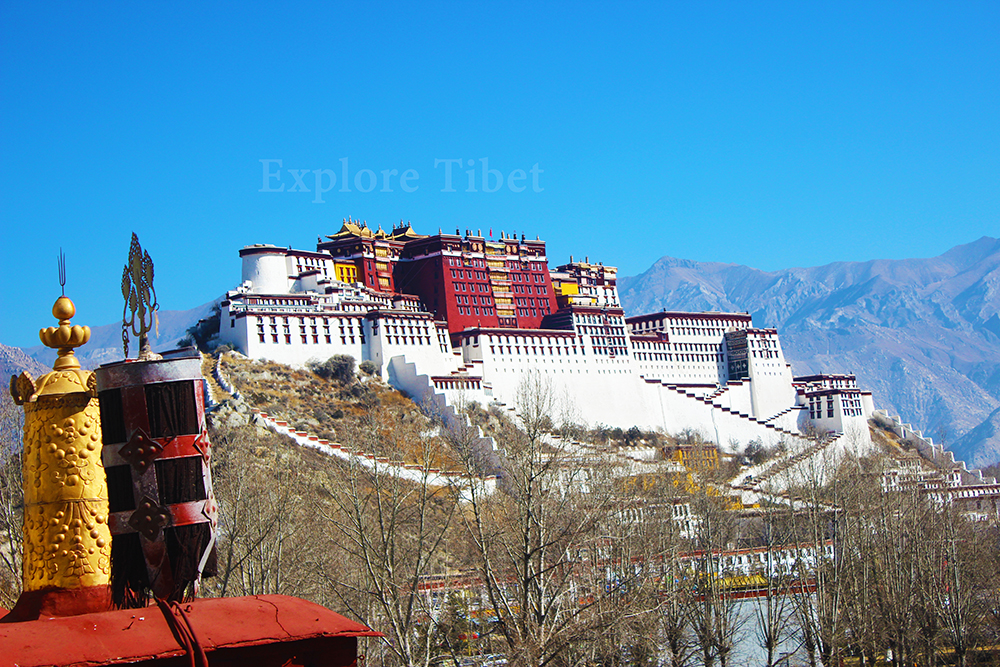Traveling to Tibet is an adventure that requires planning, and while we at Explore Tibet can organize almost all of the aspects of your Tibet tour, what we ask you to decide is when you want to go. Tibet is really a year-round holiday destination, and each of the different seasons has its own appeal for travelers.

Most people want to travel when the weather is at its best, with warm temperatures, sunny skies, and clear views. Others want to travel for the amazing trekking experience at the roof of the world, and some just want to get away to somewhere peaceful and quiet, without the crowds of most peak-season holiday destinations. Whatever your reasons for wanting to travel to Tibet, we have a season that will be ideal for you.
Seasons for Tibetan Travel
Apart from the “closed” period of around 5-6 weeks in February and March, Tibet is an all-year destination, with many different aspects depending on the seasons. In spring and fall, take to the trails and trek around Mount Kailash. In summer, take in the pleasant scenery of the Lhasa River and the Lalu Wetlands, with their amazing birdlife. In winter, view the stunning landscapes around Lake Yamdrok and tour to Shigatse, the home of the Tashilhunpo Monastery, and even Mount Everest.
Travel in Spring
Spring in Tibet runs from April to the end of May, and while the season is short, it is one of the most delightful. While temperatures can be a little cold at night, the daytime temperatures are comfortable and pleasant and suitable for all types of travelers. Spring is the start of the tourist season in Tibet and it is best to book your Tibet tour in the early spring before it gets crowded.
Travel in Summer

Summer is also the monsoon season in Tibet, although the plateau does not really see much rain. Tibet is only affected by the monsoon to a degree, largely because of the shadow effect of the western Himalayas draining the bulk of the rains before the clouds cross onto the plateau. Summer temperatures are warm and very comfortable, and the air is richer with oxygen during July and august, making it easier to acclimatize. However, summer is also the peak season for tourism, and can be crowded with tourists, especially in Lhasa.
Travel in Autumn
Similar to the spring, autumn is one of the most pleasant seasons to travel Tibet and has comfortable weather with almost no rain. With huge tracts of deciduous forests, the fall of the autumn leaves is a popular attraction, covering the ground with a carpet of fall colors. However, it can get a little cold at night, reaching temperatures of around freezing.
Travel in Winter
Contrary to popular opinion, you can visit Tibet in winter, from December to the end of January. However, February and March are closed months in Tibet for the Tibetan New year, or Losar. Winter in Tibet is not as cold as you might think, and though temperatures at night can reach as low as minus 35 degrees in the most remote and inhospitable regions overnight, daytimes in Lhasa, Shigatse, Ngari, and Nyingchi can be pleasantly warm thanks to the thinner atmosphere allowing the sun to shine stronger.
Best Time for the Major Attractions

Mount Everest
While the winter can often see snow in the west of Tibet, it is quite rare to see a huge accumulation of snowfall, and travel to Everest is easily possible from December to mid-February. Clear skies are the best time t visit Everest to get a great view of the summit of the World’s Highest Mountain, and the best months for that is April to May and October to mid-February. Spring and summer also see clearer skies, with plenty of chances to view the mountain or trek from Old Tingri to the base camp itself. Summer is the time of the monsoon, and while it may not rain much, there is a higher likelihood of cloud cover over the peak.
Mount Kailash
The three-day trek around Mount Kailash is one of the most popular treks in Tibet, and as high-altitude trekking goes, it is definitely the most spiritual. Mount Kailash, in the Ngari Prefecture, is the world’s holiest mountain, and is held to be sacred in four religions. It is best to do this trek or visit the mountain in the spring and autumn, when the weather is clearest and there is no rain. The trek takes you to very high altitudes, so good weather is essential. This also avoids the time of the main Hindu pilgrimage to Mount Kailash, which can see thousands of pilgrims making the trek around the mountain.
Lhasa

There is no best time to visit Lhasa, as the city is open for tourism throughout the year (with the exception of Losar). However, if you are not a fan of trying to cram through the temples and monasteries with thousands of people, then it is best to avoid Lhasa from July to mid-October. Summer is the busiest period for tourism in Tibet, and Lhasa is the most popular place for tourists. Known as the City of Sunlight, it is a bright and cheerful city, filled with awesome sites and amazing, unique people.
Peak season sees hundreds of thousands of Chinese tourists heading for the plateau, and the city can be very crowded. The first week of October is also a busy time in Lhasa and Tibet and should really be avoided. This week is known as National Day week in China, and it is a time when all Chinese have their annual holidays, with many traveling to Tibet for the week for their tours.
Tibet offers some of the most fabulous and amazing landscapes and scenery that this lovely planet has to offer, and much of the region is still an unspoilt paradise just waiting for visitors. And while Tibetan Buddhism offers you the path to a higher plane of existence, Tibet itself offers you the chance to reach a higher PLAIN of existence, on the vast Tibetan Plateau.

